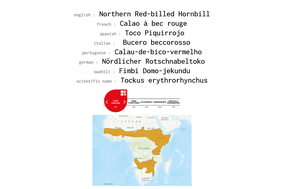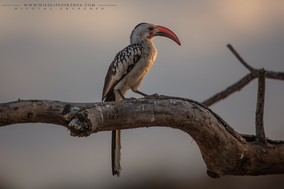- Homepage
- Bestiary
- Carnivores
- Pachydermata
- Birds of prey
- Bateleur
- Buzzard, Augur
- Buzzard, Common
- Eagle, African Crowned
- Eagle, African Fish
- Eagle, Black-chested Snake
- Eagle, Brown Snake
- Eagle, Long-crested
- Eagle, Martial
- Eagle, Steppe
- Eagle, Tawny
- Eagle, Wahlberg's
- Falcon, Amur
- Falcon, Lanner
- Falcon, Pygmy
- Goshawk, African
- Goshawk, Dark Chanting
- Goshawk, Eastern Chanting
- Goshawk, Gabar
- Harrier, African Marsh
- Harrier, Eurasian Marsh
- Harrier, Montagu's
- Harrier, Pallid
- Hawk, African Harrier
- Hobby, eurasian
- Kestrel, Common
- Kestrel, Grey
- Kestrel, Greater
- Kestrel, Lesser
- Kite, Yellow-billed
- Kite, Black-winged
- Eagle-owl, Verreaux's
- Owl, african scops
- Owl, Marsh
- Secretary Bird
- Sparrowhawk
- Vulture, Egyptian
- Vulture, Hooded
- Vulture, Lappet-faced
- Vulture, Palm-nut
- Vulture, Rüppell's
- Vulture, White-backed
- Vulture, White-headed
- Ongulates
- Antelope, sable
- Bongo
- Buffalo
- Bushbuck
- Bushpig
- Dik-dik, Kirk's
- Dik-dik, Günther's
- Duiker, common
- Duiker, Harvey's
- Eland
- Gazelle, Grant
- Gazelle, Thomson
- Gerenuk
- Giraffe, masai
- Giraffe, reticulated
- Giraffe, Rotschild's
- Hartebeest
- Hog, giant forest
- Impala
- Klipspringer
- Kudu, greater
- Kudu, lesser
- Oribi
- Oryx, east african
- Oryx, fringe-eared
- Reedbuck, Bohor
- Reedbuck, mountain
- Steenbok
- Suni
- Topi
- Warthog
- Waterbuck, common
- Waterbuck, defassa
- Wildebeest
- Zebra, Grevy
- Zebra, hybrid
- Zebra, plain
- Reptiles
- Waders and water birds
- Avocet pied
- Bittern, dwarf
- Coot
- Cormorant, long-tailed
- Cormorant, white-breasted
- Courser, Bronze-winged
- Courser, somali
- Courser, Temminck's
- Courser, three-banded
- Courser, Two Banded
- Crake black
- Crane, grey crowned
- Darter, african
- Duck, african black
- Duck, knob-billed
- Duck, white-backed
- Duck, white-faced whistling
- Duck, yellow-billed
- Egret, cattle
- Egret, great
- Egret, intermediate
- Egret, little
- Flamingo, greater
- Flamingo, lesser
- Goose, egyptian
- Goose, spur-winged
- Grebe, little
- Greenshank, common
- Gull, grey-headed
- Gull, sooty
- Hamerkop
- Heron, black
- Heron, black-headed
- Heron, goliath
- Heron, grey
- Heron, purple
- Heron, rufous-bellied
- Heron, squacco
- Heron, striated
- Night-heron, black-crowned
- Ibis, african sacred
- Ibis, glossy
- Ibis, hadada
- Jacana, African
- Lapwing, black-winged
- Lapwing, Senegal
- Moorhen, common
- Painted-snipe, greater
- Pelican, great white
- Pelican, pink-backed
- Plover, blacksmith
- Plover, caspian
- Plover, crowned
- Plover, kittlitz's
- Plover, long-toed
- Plover, ringed
- Plover, spur-winged
- Plover, three-banded
- Plover, wattled
- Pratincole, collared
- Ruff
- Sandpiper, common
- Sandpiper, green
- Sandpiper, marsh
- Sandpiper, wood
- Sandplover, greater
- Snipe, common
- Spoonbill
- Stilt
- Stint, little
- Stork, abdim's
- Stork, african openbill
- Stork, black
- Stork, marabou
- Stork, saddle-billed
- Stork, white
- Stork, woolly-necked
- Stork, yellow-billed
- Teal, common
- Teal, Hottentot
- Teal, red-billed
- Teal cape
- Tern, white-winged
- Tern, whiskered
- Thick-knee, spotted
- Thick-knee, water
- Terrestrial birds
- Bustard, black-bellied
- Bustard, buff-crested
- Bustard, Hartlaub's
- Bustard, kori
- Bustard, white-bellied
- Francoli, coqui
- Francolin, crested
- Francolin, Hildebrandt's
- Francolin, Jackson's
- Francolin, red-winged
- Francolin, Shelley's
- Guineafowl, helmeted
- Guineafow, vulturine
- Hornbill, southern ground
- Ostrich, masai
- Ostrich, somali
- Sandgrouse, black-faced
- Sandgrouse, chesnut-bellied
- Sandgrouse, yellow-throated
- Spurfowl, red-necked
- Spurfowl, yellow-necked
- Birds
- Apalis, yellow-breasted
- Babbler, arrow-marked
- Babbler, brown
- Babbler, northern pied
- Barbet, d'Arnaud's
- Barbet, red-and-yellow
- Barbet, red-fronted
- Batis chin-spot
- Bee-eater, blue-cheeked
- Bee-eater, little
- Bee-eater, cinnamon-chested
- Bee-eater, eurasian
- Bee-eater, olive
- Bee-eater, somali
- Bee-eater, white-throated
- Bee-eater, white-fronted
- Bishop, yellow
- Bishop, Zanzibar red
- Bishop, yellow-crowned
- Boubou, tropical
- Boubou, slate-coloured
- Bulbul
- Bush-shrike, sulphur-breasted
- Bunting, cinnamon-breasted rock
- Bush-shrike, rosy-patched
- Camaroptera, grey-backed
- Canary, brimstone
- Canary, yellow-crowned
- Chat, alpine
- Chat, anteater
- Chat, cliff
- Chat, sooty
- Chatterer
- Cisticola, Aberdare
- Cisticola, desert
- Cisticola, Hunter's
- Cisticola Lyne's
- Cisticola, rattling
- Cisticola, stout
- Cisticola, winding
- Citril, african
- Cordon-bleu
- Coucal, white-browed
- Coucal, black
- Crow, house
- Crow, pied
- Cuckoo, african
- Cuckoo, african emerald
- Cuckoo, common
- Cuckoo, Diederik
- Cuckoo, great spotted
- Cuckoo, red-chested
- Dove, african mourning
- Dove, dusky turtle
- Dove, emerald-spotted wood
- Dove, namaqua
- Dove, laughing
- Dove, red-eyed
- Dove, ring-necked
- Drongo, fork-tailed
- Firefinch
- Fiscal, northern
- Fiscal, grey-backed
- Fiscal, long-tailed
- Fiscal, Taita
- Flycatcher, african dusky
- Flycatcher, african grey
- Flycatcher, african paradise
- Flycatcher, spotted
- Flycatcher, southern black
- Flycatcher, white-eyed slaty
- Go-away-bird
- Grenadier, purple
- Hoopoe
- Hoopoe, green wood
- Hornbill, african grey
- Hornbill, Jackson's
- Hornbill, Von Der Decken's
- Hornbill, red-billed
- Hornbill, eastern yellow-billed
- Hornbill, sylvery-cheeked
- Hornbill, crowned
- Indigobird, village
- Kingfisher, grey-headed
- Kingfisher, giant
- Kingfisher, malachite
- Kingfisher, pied
- Kingfisher, striped
- Kingfisher, woodland
- Lark, pink-breasted
- Lark, red-capped
- Lark, rufous-naped
- Longclaw, pangani
- Longclaw, rosy-breasted
- Longclaw, yellow-throated
- Lovebird
- Mannikin, bronze
- Mannikin, rufous-backed
- Mousebird, blue-naped
- Mousebird, speckled
- Mousebird, white-headed
- Oriole, black-headed
- Oriole, african golden
- Oxpecker, yellow-billed
- Oxpecker, red-billed
- Parrot, brown
- Parrot, red-bellied
- Pigeon, african green
- Pigeon, speckled
- Pipit, grassland
- Pipit, plain-backed
- Pipit, golden
- Quail-finch
- Quelea red-billed
- Raven, white-necked
- Raven, fan-tailed
- Robin-chat, Cape
- Robin-chat, white-browed
- Roller, eurasian
- Roller, lilac-breasted
- Roller, purple
- Rook, Cape
- Scimitarbill
- Scimitarbill, Abyssinian
- Scrub Robin, white-browed
- Seedeater, streaky
- Seedeater, yellow-rumped
- Shrike, lesser grey
- Shrike, red-backed
- Shrike, northern white-crowned
- Shrike, Isabelline
- Silverbird
- Sparrow, chesnut
- Sparrow, grey-headed
- Sparrow, rufous
- Sparrow, yellow-spotted bush
- Sparrow-Lark Fischer's
- Sparrow-weaver, Donaldson-Smith's
- Sparrow weaver, white-browded
- Starling, black-bellied
- Starling, bristle-crowned
- Starling, Fischer's
- Starling, Golden-breasted
- Starling, greater blue-eared
- Starling Hildebrandt's
- Starling, red-winged
- Starling, Rüppell's
- Starling, slender-billed
- Starling, superb
- Starling, violet-backed
- Starling, wattled
- Sunbird, amethyst
- Sunbird, beautiful
- Sunbird, bronze
- Sunbird, eastern double-collared
- Sunbird, golden-winged
- Sunbird, Hunter's
- Sunbird, malachite
- Sunbird, mariqua
- Sunbird, eastern violet-backed
- Sunbird, purple-banded
- Sunbird, scarlet-chested
- Sunbird, scarlet-tufted malachite
- Sunbird, tacazze
- Sunbird, variable
- Swallow, barn
- Swallow, red-rumped
- Swallow, lesser striped
- Swallow, wire-tailed
- Tchagra, black-crowned
- Tchagra, brown-crowned
- Thrush, abyssinian
- Thrush, common rock
- Thrush, spotted morning
- Tit, red-throated
- Tit, white-bellied
- Wagtail, african pied
- Wagtail, western yellow
- Warbler, grey-capped
- Warbler, moustached grass
- Warbler, willow
- Waxbill, common
- Weaver, african golden
- Weaver, Baglafecht
- Weaver, black-capped social
- Weaver, chesnut
- Weaver, grey-capped social
- Weaver, grosbeak
- Weaver, Holub's golden
- Weaver, northern masked
- Weaver, parasitic
- Weaver, red-billed
- Weaver, red-headed
- Weaver, spectacled
- Weaver, speckle-fronted
- Weaver, Speke's
- Weaver, Taveta golden
- Weaver, village
- Weaver, vitelline masked
- Weaver, white-headed buffalo
- Wheatear, abyssinian black
- Wheatear, capped
- Wheatear, isabelline
- Wheatear, northern
- Whinchat
- Whydah, paradise
- Whydah, pin-tailed
- Widowbird, Jackson's
- Widowbird, red-cowled
- Widowbird, white-winged
- Widowbird, yellow-mantled
- Woodpecker, grey
- Wodpecker, nubian
- Wren-Warbler , Grey
- Primates, Rodents and Others
- Baboon, olive
- Baboon, yellow
- Colobus, angolan
- Colobus, guereza
- Galago, greater
- Hare
- Hyrax, rock
- Hyrax, bush
- Mongoose, banded
- Mongoose, dwarf
- Mongoose, slender
- Mongoose, white-tailed
- Mole rat, naked
- Monkey, blue
- Monkey, patas
- Monkey, vervet
- Porcupine
- Rat, afroalpine vlei
- Squirrel, unstripped ground
- Squirrel, ochre bush
- Squirrel, red bush
- Chiromantis petersii
- B&W Gallery
- Buy prints
- Contact
Carnivores Pachydermata Ongulates Reptiles Primates, rodents and others Birds Birds of prey Terrestrial birds Waders and water birds
Northern Red-billed Hornbill
The northern red-billed hornbill (Tockus erythrorhynchus) is a species of hornbill in the family Bucerotidae. It is found from southern Mauritania through Somalia and northeast Tanzania. There are five species of red-billed hornbills recognized, but all five were once considered conspecific and some authorities still classify the others as subspecies of Tockus erythrorhynchus. During incubation, the female lays three to six white eggs in a tree hole, which is blocked off with a plaster of mud, droppings and fruit pulp. There is only one narrow aperture, just big enough for the male to transfer food to the mother and the chicks. When the chicks and the female are too big for the nest, the mother breaks out and rebuilds the wall. Then both parents feed the The female red-billed hornbill protects her young against intruders by building a wall across the opening of her nest. She then seals herself in and brings up her chicks in a 'prison'.They are omnivorous, taking insects, fruit and seeds. They feed mainly on the ground and will form flocks outside the breeding season chicks.
Source : Wikipedia












